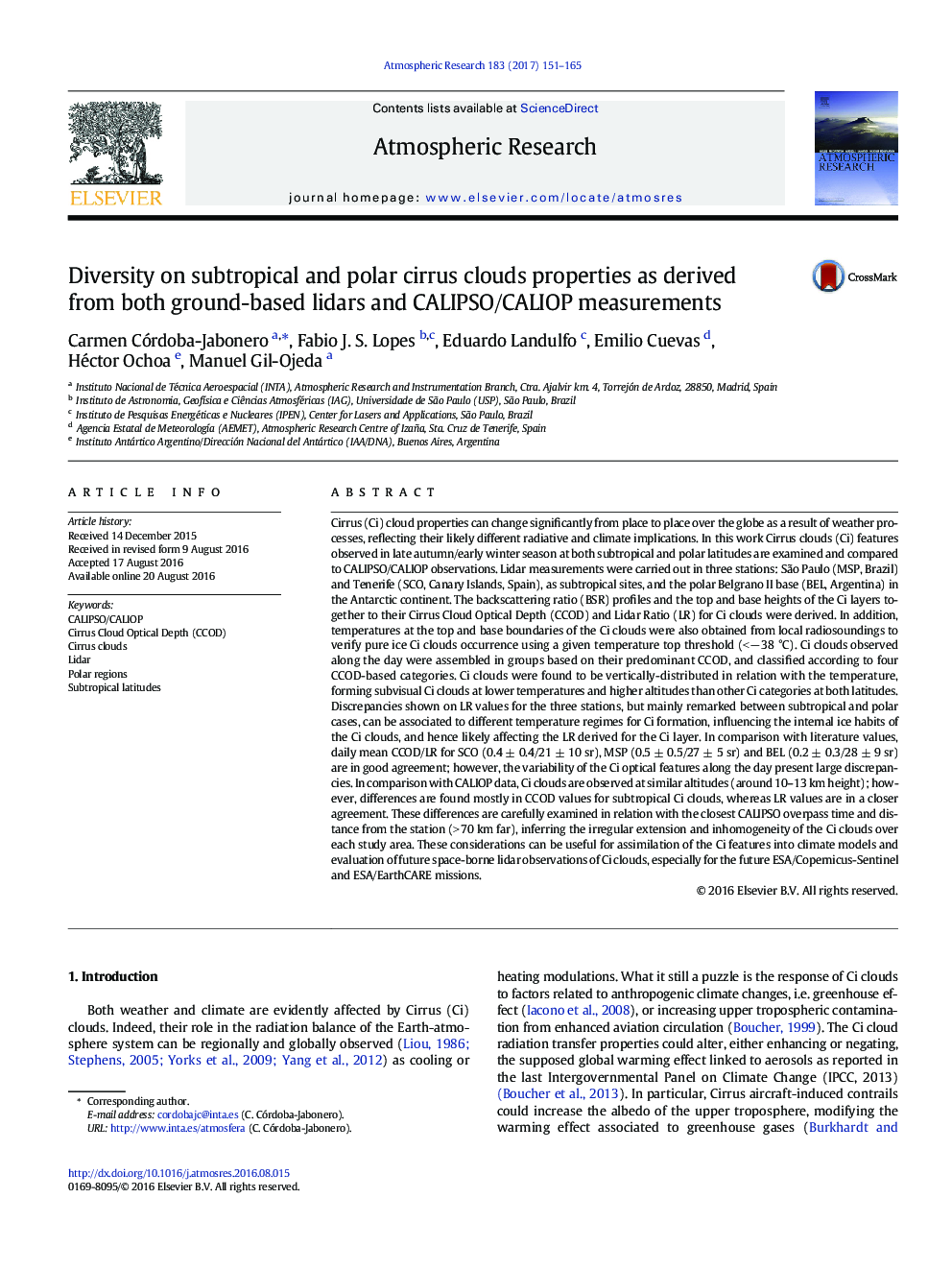| کد مقاله | کد نشریه | سال انتشار | مقاله انگلیسی | نسخه تمام متن |
|---|---|---|---|---|
| 4449555 | 1620498 | 2017 | 15 صفحه PDF | دانلود رایگان |
• Good lidar performance on altitude detection and optical classification of Ci clouds
• Subtropical/Polar Ci properties diversity: temperature-linked Ci formation/microphysics
• Good agreement with CALIOP if irregular Ci extension over a GB station is considered.
Cirrus (Ci) cloud properties can change significantly from place to place over the globe as a result of weather processes, reflecting their likely different radiative and climate implications. In this work Cirrus clouds (Ci) features observed in late autumn/early winter season at both subtropical and polar latitudes are examined and compared to CALIPSO/CALIOP observations. Lidar measurements were carried out in three stations: São Paulo (MSP, Brazil) and Tenerife (SCO, Canary Islands, Spain), as subtropical sites, and the polar Belgrano II base (BEL, Argentina) in the Antarctic continent. The backscattering ratio (BSR) profiles and the top and base heights of the Ci layers together to their Cirrus Cloud Optical Depth (CCOD) and Lidar Ratio (LR) for Ci clouds were derived. In addition, temperatures at the top and base boundaries of the Ci clouds were also obtained from local radiosoundings to verify pure ice Ci clouds occurrence using a given temperature top threshold (<− 38 °C). Ci clouds observed along the day were assembled in groups based on their predominant CCOD, and classified according to four CCOD-based categories. Ci clouds were found to be vertically-distributed in relation with the temperature, forming subvisual Ci clouds at lower temperatures and higher altitudes than other Ci categories at both latitudes. Discrepancies shown on LR values for the three stations, but mainly remarked between subtropical and polar cases, can be associated to different temperature regimes for Ci formation, influencing the internal ice habits of the Ci clouds, and hence likely affecting the LR derived for the Ci layer. In comparison with literature values, daily mean CCOD/LR for SCO (0.4 ± 0.4/21 ± 10 sr), MSP (0.5 ± 0.5/27 ± 5 sr) and BEL (0.2 ± 0.3/28 ± 9 sr) are in good agreement; however, the variability of the Ci optical features along the day present large discrepancies. In comparison with CALIOP data, Ci clouds are observed at similar altitudes (around 10–13 km height); however, differences are found mostly in CCOD values for subtropical Ci clouds, whereas LR values are in a closer agreement. These differences are carefully examined in relation with the closest CALIPSO overpass time and distance from the station (> 70 km far), inferring the irregular extension and inhomogeneity of the Ci clouds over each study area. These considerations can be useful for assimilation of the Ci features into climate models and evaluation of future space-borne lidar observations of Ci clouds, especially for the future ESA/Copernicus-Sentinel and ESA/EarthCARE missions.
Journal: Atmospheric Research - Volume 183, 1 January 2017, Pages 151–165
